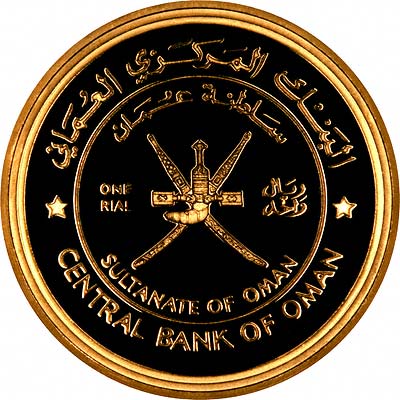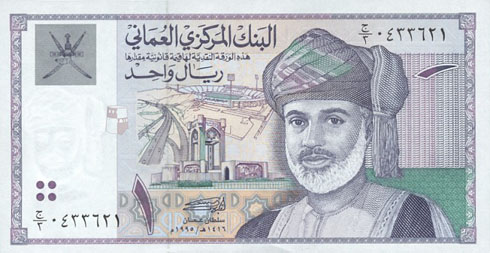|


The rial (ISO 4217 code OMR) is the currency of Oman. It is divided into 1000 baisa (also written baiza).
History
Before 1940, the Indian rupee and the Maria Theresa Thaler (known locally as the rial) were the main currencies circulating in Muscat and Oman, as the state was then known, with rupees circulating on the coast and Thaler in the interior. Maria Theresa Thaler were valued at 230 paisa, with 64 paisa equal to the rupee.
In 1940, coins were introduced for use in Dhofar, followed, in 1946, by coins for use in Oman. Both coinages were denominated in baisa (equivalent to the paisa), with 200 baisa to the rial. The Indian rupee and, from 1959, the Gulf rupee continued to circulate.
In 1970, the rial Saidi (not to be confused with Saudi riyal) was made the currency of Oman. It was equal to the British pound and replaced the Gulf rupee at a rate of approximately 21 rupees to the rial. The new rial was subdivided into 1000 baisa. The rial Omani replaced the rial Saidi at par in 1973. The currency name was altered due to the regime change in 1970 and the subsequent change of the country's name.
For a wider history surrounding currency in the region, see The History of British Currency in the Middle East.
Coins
In the 1890s, coins for 1/12 and ¼ anna (1 paisa) were minted specifically for use in Muscat and Oman.
In 1940, coins were issued for use in Dhofar in denominations of 10, 20 and 50 baisa. ½ rial coins were added in 1948, followed by 3 baisa in 1959. In 1946, 2, 5 and 20 baisa coins were introduced for use in Oman. These were followed, between 1959 and 1960, by 3 baisa, ½ and 1 rial coins.
In 1970, a coinage for all of Muscat and Oman was introduced. Denominations were 2, 5, 10, 25, 50 and 100 baisa. In 1975, new coins were issued with the country's name given as Oman. ¼ and ½ rial coins were introduced in 1980. Coins currently circulating are
- 5 baisa
- 10 baisa
- 25 baisa
- 50 baisa
100 baisa, ¼ rial Omani, and ½ rial Omani coins made of non-precious metal were also issued in the 1980s.
Banknotes
In 1970, banknotes were introduced by the government in denominations of 100 baiza, ¼, ½, 1, 5 and 10 rial saidi. These were followed in 1973 by notes for 100 baiza, ¼, ½, 1, 5 and 10 Omani rials issued by the Oman Currency Board. From 1977, the Central Bank of Oman has issued notes, with 20 and 50 rial notes introduced that, followed by 200 baisa notes in 1985.
A new 1 rial note is now in circulation alongside the 1970 note which is still accepted. The new 1 rial note is red, similar to the 5 rial note.
Although the 100 baisa and 20 rial notes are both green, the former is considerably smaller, and thus the two are easily distinguishable.
Fixed exchange rate
From 1973 to 1986, the rial was pegged to U.S. dollar at 1 rial = 2.895 dollars. In 1986, the rate was changed to 1 rial = 2.6008 dollars, which translates to approximately 1 dollar = 0.384497 rial. The Central Bank buys U.S. dollars at 0.384 rial, and sell U.S. dollars at 0.385 rial.Before Malta's adoption of the euro on 1 January 2008, it was the fourth highest-valued currency unit after the Kuwaiti dinar, Maltese lira, and the Bahraini dinar. Now it is the third highest.
The text on this page has been made available under the Creative Commons Attribution-ShareAlike License and Creative Commons Licenses
|
